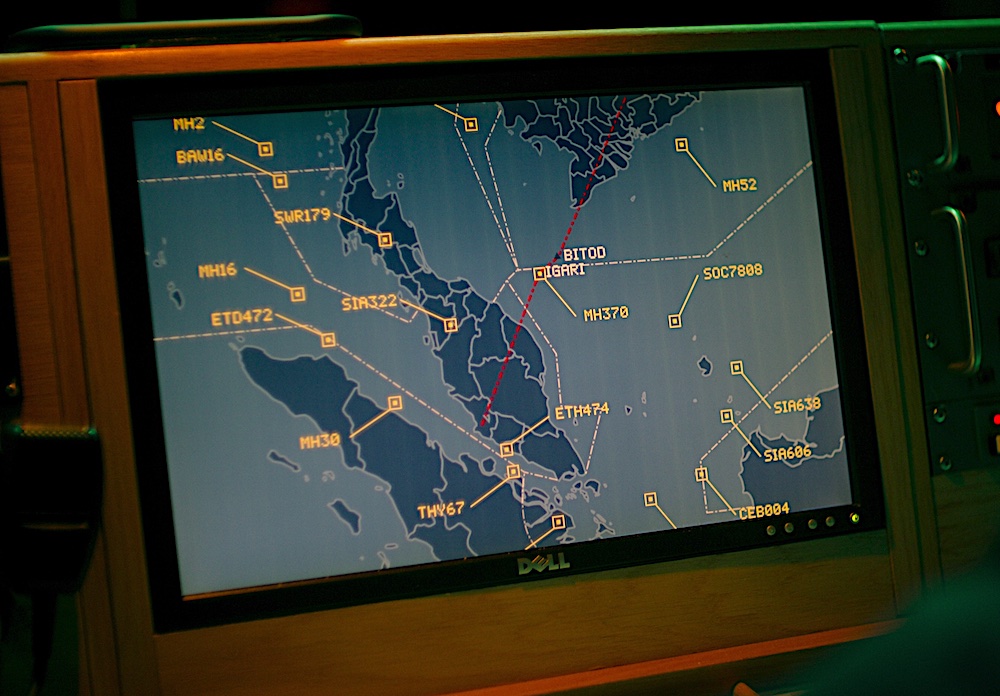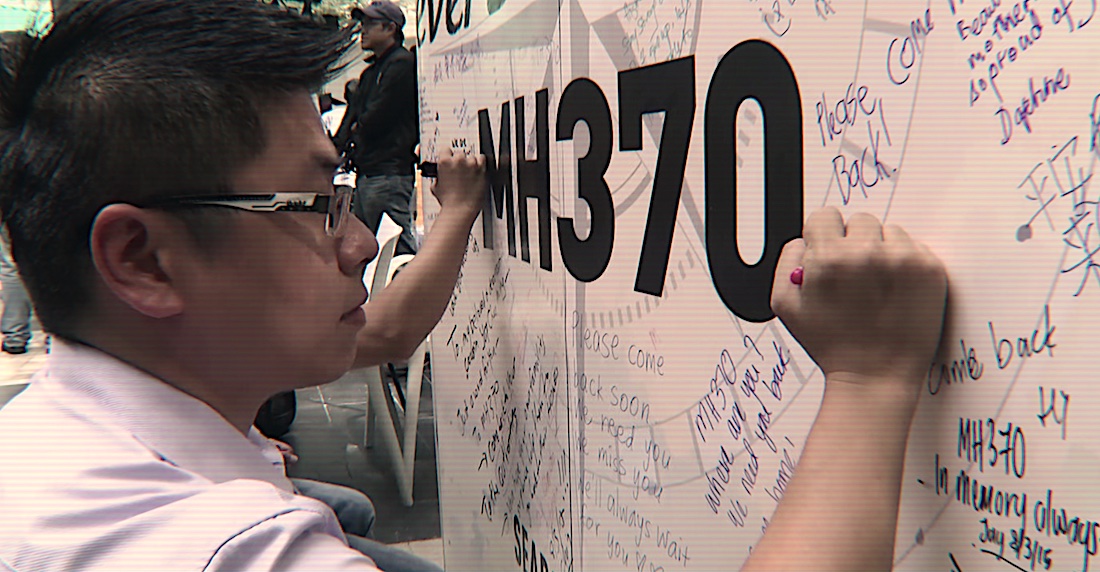For fans of conspiracy theories, this three-part examination of the disappearance of Malaysian Airlines flight MH370 is irresistible, though the continuing anguish of friends and relatives of the 239 people aboard the flight makes for some painful viewing.
The bare facts are that the aircraft, a Boeing 777, took off on 8 March 2014 on an overnight flight from Kuala Lumpur in Malaysia to Beijing, but it hadn’t been airborne for an hour before it suddenly vanished from air traffic control radar screens. Military radar data subsequently showed that it had made an inexplicable turn from north-east to west before going out of range and disappearing.
Mysteriously, the plane’s on-board Satellite Data Unit suddenly began to function again shortly after 370 fell off the radar. This enabled the British company Inmarsat, using their satellite network, to show that 370 might have headed north towards Kazakhstan, or alternatively south towards the Indian Ocean. It was concluded that the latter had occurred, prompting a vast search (led by the Australians) of the southern Indian Ocean. Given that the search area was as large as the USA, and weather conditions were frequently terrifying, it was little surprise that even after more than two years of effort, no trace of the aircraft had been found. Debris subsequently found on Réunion Island and Madagascar was identified as belonging to a Boeing 777, though not necessarily the 777 in question.
 But the fascination of the story is the way that various interested, or obsessed, parties have found ingenious ways of joining up the limited number of dots to reach some outlandish conclusions. At first the pilot, Captain Zaharie, came under suspicion. Perhaps he committed mass murder owing to fanatical political or religious beliefs, or maybe he just committed suicide and took 238 other people with him? But despite plenty of investigation, there's no proof of Zaharie's guilt.
But the fascination of the story is the way that various interested, or obsessed, parties have found ingenious ways of joining up the limited number of dots to reach some outlandish conclusions. At first the pilot, Captain Zaharie, came under suspicion. Perhaps he committed mass murder owing to fanatical political or religious beliefs, or maybe he just committed suicide and took 238 other people with him? But despite plenty of investigation, there's no proof of Zaharie's guilt.
More fanciful suggestions were that the plane had been taken over by aliens, or had been struck by a meteorite. Or perhaps it was all far simpler. Florida-based Cyndi Hendry was one of millions of volunteers working with Tomnod, a crowdsourcing project which assigned chunks of satellite imagery to participants who would search for signs of the lost plane. Hendry was convinced she’d spotted MH370 wreckage close to where its radar signature vanished, but it was impossible to see how she thought she could make out sections of nose or fuselage from the blurry white blobs on her screen.
US aviation journalist Jeff Wise was badly bitten by the 370 bug (“So did MH370 drive me mad? Yes!”), and he presented the show’s most fantastical theory. Persuaded by the loss of another Malaysian Airlines flight, MH17, which was shot down over Ukraine by Russian-backed separatists only four months after the loss of MH370, Wise devised a scenario whereby Russian agents took over 370 and flew it to Kazakhstan. Apparently, it’s possible to get into a Boeing 777’s electronic systems compartment merely by lifting up a trapdoor between the first class cabin and the cockpit. Perhaps this enabled some Vladimir Bond or Sergei Hunt to hijack the plane?
 Perhaps more feasible was a theory by Florence de Changy, a foreign correspondent for French newspaper Le Monde. This one involves covert action by the Americans, using the radar-jamming capacity of AWACS spy planes to make MH370 vanish because it was carrying some kind of top-secret cargo to China. Ms Changy also suggests a conspiracy between the Americans, the Australians and the British (the same AUKUS collective who have been cutting out the French from supplying submarines to Australia).
Perhaps more feasible was a theory by Florence de Changy, a foreign correspondent for French newspaper Le Monde. This one involves covert action by the Americans, using the radar-jamming capacity of AWACS spy planes to make MH370 vanish because it was carrying some kind of top-secret cargo to China. Ms Changy also suggests a conspiracy between the Americans, the Australians and the British (the same AUKUS collective who have been cutting out the French from supplying submarines to Australia).
But the Changy thesis gained extra weight from Ghyslain Wattrelos, a French businessman whose wife and two children were on the flight, and who has been battling relentlessly to get to the truth. Wattrelos seems both plausible and rational. His account of being told by a senior intelligence operative that the Americans, who have vast amounts of surveillance technology in Singapore and the Indian Ocean, know all about the fate of MH370 struck a note of chilling authenticity. There’s something very dark at the core of this story, but will it ever come out?















Add comment